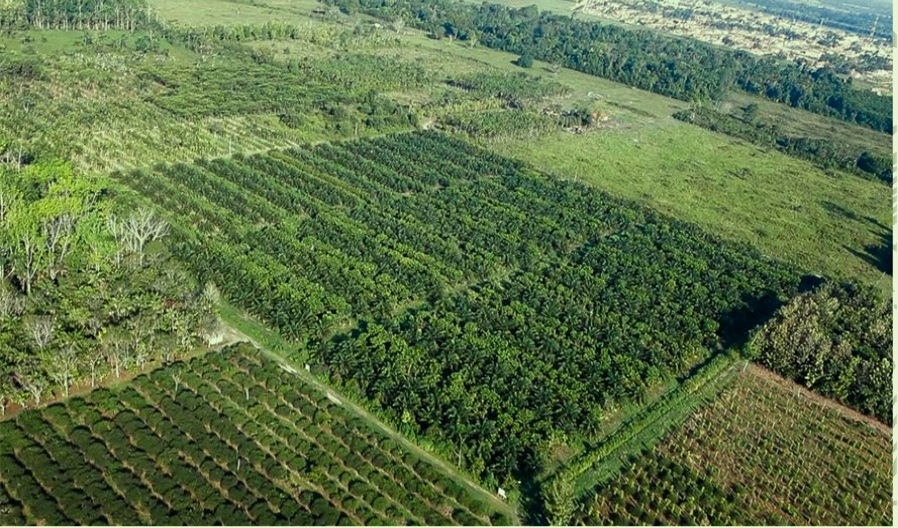Agroforestry is widely adopted agriculture system by nations to mitigate the impact global warming. Environmentalists recommend the adoption of this technology throughout the world. Due to the adverse impact of conventional farming methods, and to enhance food production to meet growing food requirements, agroforestry serves as the best option. It provides a system to deal with food insecurity in maintainable farming methods. Let us learn more about Agroforestry in detail.

Efficient management of trees: The major objective of Agroforestry is that it combines contemporary and conventional land-use systems. This technology helps in efficient management of trees, production of crops and animals. Agroforestry includes the interaction of shrubs, agriculture, and trees, where they are not just designed but also managed as a single unit.
Improves crop productivity: It is a practice that makes the best management of land. It combines forestry as well as agriculture with an aim to enhance crop productivity and enhance soil fertility, biodiversity and lower soil erosion. With Agroforestry, the environmental function of crops, animals and trees enhances production of food and reduce the effect of cultivation on the environment.
Water logging: By the method of water removal, planted trees can greatly lower water logging in an area. This can cause better use of land resources such as crop and pasture. Agroforestry benefits the farmer and the environment in multitude of ways. It provides farmer with an ability to get authority over land and harvest, in situations of climate change.
Prevents Soil Erosion: In dry areas, competition between crops and trees becomes a big issue. Agroforestry helps in increasing availability of water to soil. In this way, it aids in prevention of soil erosion, aids in water retention and promote soil fertility. This serves as a solution for regions that experiences irregular rainfall. Dense tree plantations in these areas assist in improved absorption of CO2 and regulation of local temperature at a place.
Promotes favorable soil properties: Agroforestry assists in maintenance of organic matter that helps farmer to maintain favorable soil physical properties in comparison to agriculture. In this way, it results in a more enclosed nutrient cycling as compared to agriculture. Agroforestry, with the help of remarkable level of forest gardening and farming systems, result in efficient usage of nutrients in the soil. It tracks any buildup of soil toxicities, and lower soil salinization and acidification.
Boosts Economy: Agroforestry provides a varied farm economy. It boosts the entire rural economy that results in a more stable community and farm. Due to production of several types of products by the Agroforestry systems, economic hazards are reduced to a significant level.
Better food security and nutrition: The act of afforestation in agricultural lands not just improves yield but also ensures heightened food security. Agroforestry assists in ensuring high level of nutrition and health due to an increase in quality of yield and its diversity.
Tree plantation can also be used in the form of a fuel. Non-wood products and food that can either be sold or consumed, results in an additional level of food security.
Agroforestry supports the cultivation of a broad selection of products that includes timber, fodder, forage, fibre, medicinal products, craft products, gums, resins, hedging materials, and a few more.
Creation of strong livelihoods: Tree plantation along with the growth of animals reduce any susceptibilities linked to agricultural cultivation. It enhances the recovery post occurrence of natural calamities, socio-economic dips or any other form of hazard. Agroforestry economics enhances the assortment of production in the system. This, in turn, leads to the reduction of the chances of economic failure.
Improved and maintainable productivity enhances the levels of agricultural income. Agroforestry also leads to higher income, and sustained employment that, in turn, leads to a major enhancement in living standards of countryside people.
Mitigation and adaptation of climate change: Growth of trees in existing agricultural system lessens the effect of change in climate on agriculture. By obtaining plant-based products from plants that are cultivated on the land, it reduces the requirement to cut down trees. This, in turn, reduces the need of deforestation. Trees planted in agroforestry systems aids in mitigating climatic change via carbon appropriation.
Agroforestry improves weather patterns and climatic conditions by changing microclimatic conditions like temperature, wind speed, and amount of water vapor in air that positively impacts the growth of crops and welfare of animals. By regulating quality of air, rain cycles, patterns, wind erosion, and water concentration, agroforestry reduces the impact of global warming and climatic change on agriculture.
Conclusion
Agroforestry helps to reap considerable benefits on both economic and environmental fronts. It helps in producing greater agricultural output. This system proves to more sustainable compared to agricultural monocultures or forestry. Looking at the benefits and features of an agroforestry system, it has been adopted in several regions of the world.